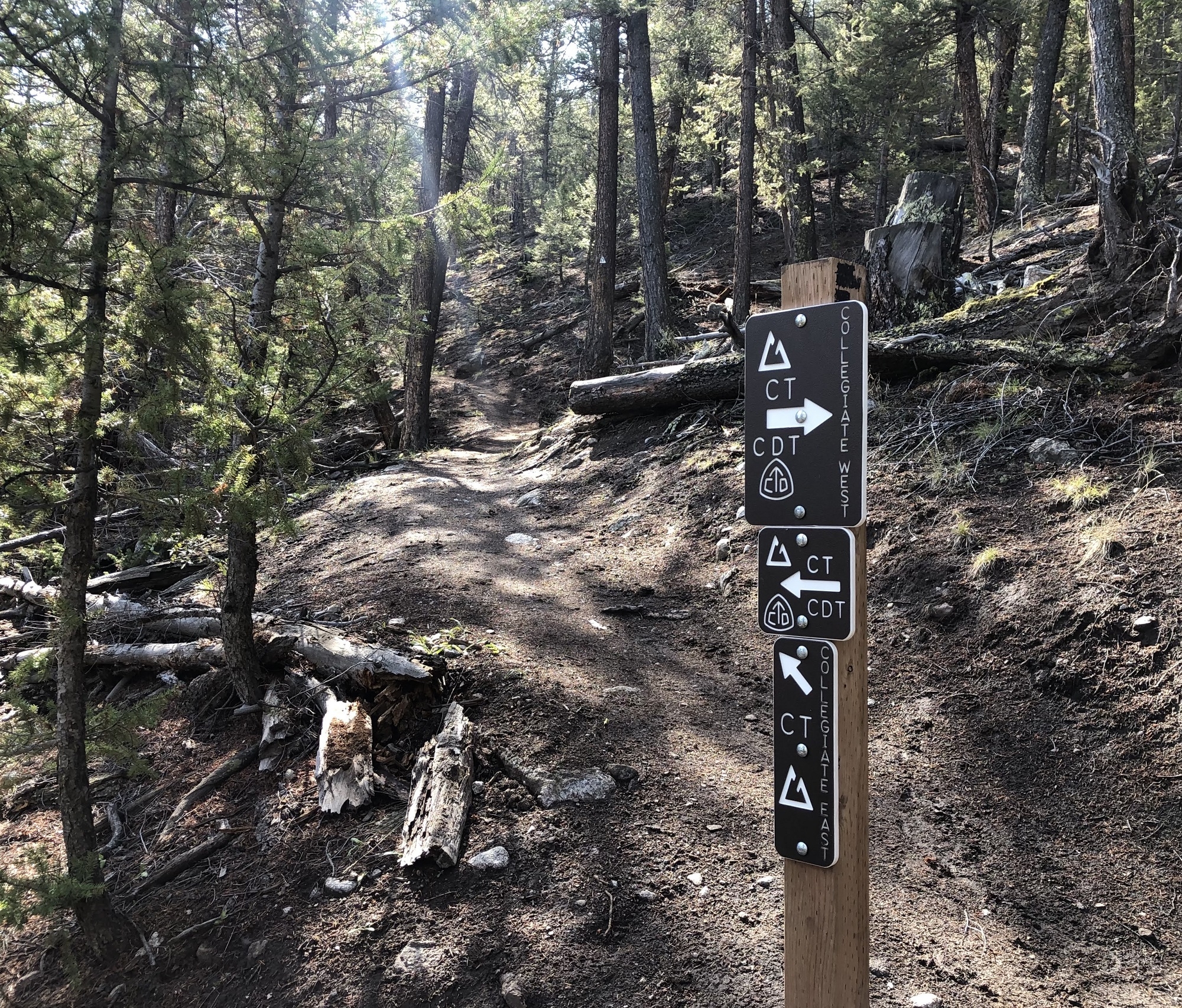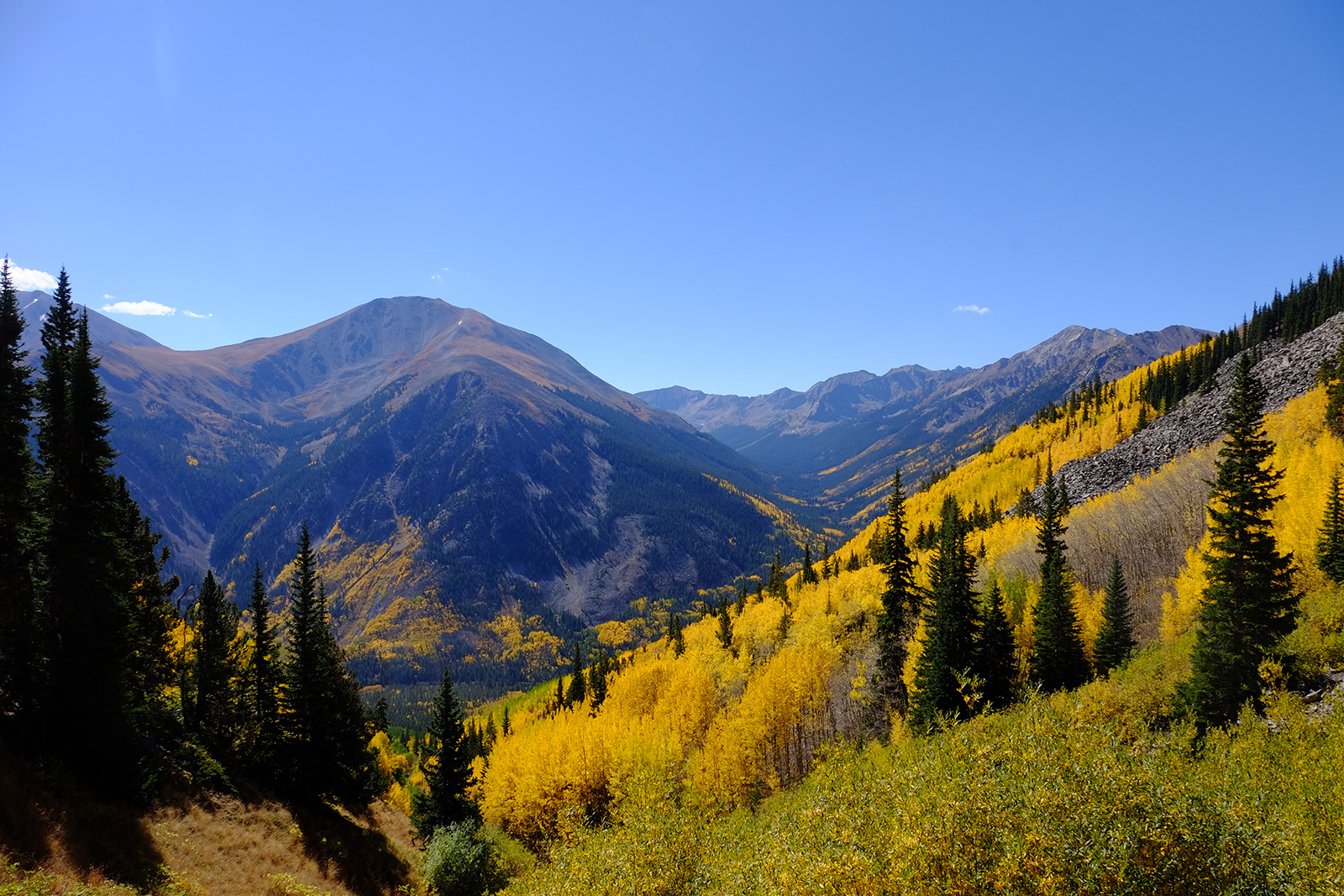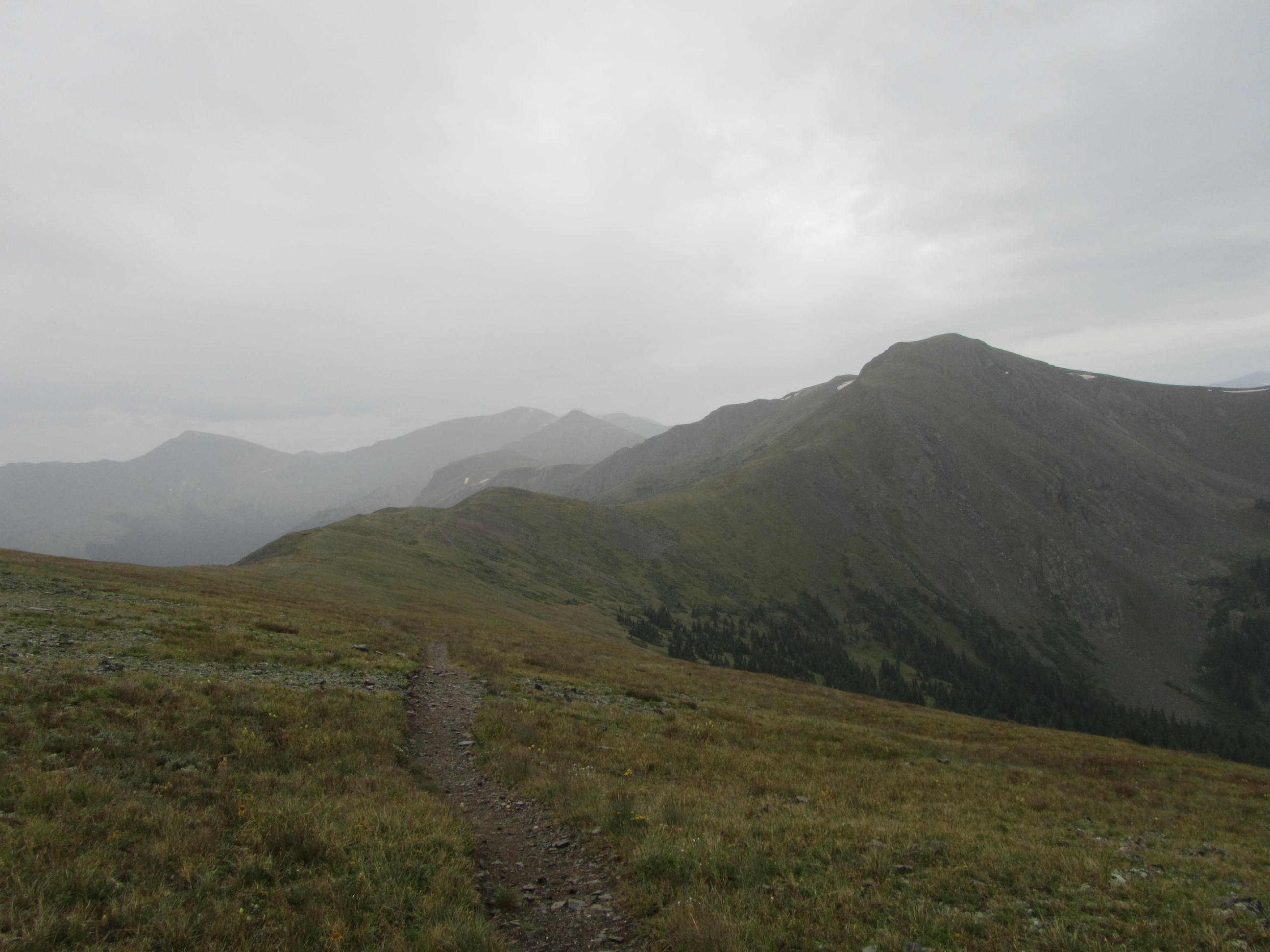Collegiate East vs West: 8 Key Differences for CT Thru-Hikers
The 486-mile Colorado Trail is rapidly growing in popularity among thru-hikers. It’s incredibly scenic, and logistically, it’s fairly easy to plan an end-to-end hike between the termini in Denver and Durango. The trail comes within walking or hitching distance of towns at regular intervals, the terrain is surprisingly forgiving, and the endpoints are both near cities with airports and other public transit.
The straightforward logistics of the CT make it appealing for experienced thru-hikers and novices alike, but there’s one section of the trail that’s a genuine head-scratcher.
Between the towns of Twin Lakes (CT mile 178) and Salida (mile 253) lie the Collegiate Peaks, so-named because many of the mountains there are named after universities—Mount Princeton, Mount Harvard, etc.
Traditionally, the Colorado Trail takes a lower-elevation route on the eastern side of the Collegiate Peaks, but an alternative western route was officially introduced in 2012. Collegiate West, which is part of the Continental Divide Trail, is more remote and keeps mostly to the higher elevations of the Collegiates.
The two routes are drastically different, and many thru-hikers agonize over which path to choose. Fortunately, the stark contrasts between East and West make it relatively easy to identify the pros and cons of each. If you know yourself and know your priorities for the Colorado Trail, weighing these differences should make it simple to choose between Collegiate East and Collegiate West.

…wut. Photo via.
Collegiate East vs. West: Quick Facts
Collegiate East
- Total length: 78.1 miles
- Total elevation gain: 17,800 ft.
- Resupply options: Twin Lakes, Buena Vista, Mt. Princeton Hot Springs Resort, Salida
- 14ers accessible from the trail: 10
Collegiate West
- Total length: 83.2 miles
- Total elevation gain: 19,800 ft.
- Resupply options: Twin Lakes, Gunnison, Salida
- 14ers accessible from the trail: 5
Collegiate East or Collegiate West: Which Should You Choose on Your Colorado Trail Thru-Hike?
If you want a slightly easier trek.

Collegiate East vs. West: Looking west from Hope Pass, the first of many tough climbs on Collegiate West. Photo via the Real Hiking Viking.
Collegiate East gains 17,800 feet of elevation across 78 miles, while Collegiate West gains 19,800 feet in 83 miles. The west route is ore rugged and challenging (not to mention exposed than the lower, more gently-graded east route.
Verdict: Collegiate East.
If you want epic scenery.

Photo via the Real Hiking Viking.
Both Collegiate East and West are beautiful trails in their own ways. The East route is drier and has more desert scenery. The West Route is higher and wetter and the scenery is more alpine. While both are lovely, the general consensus is that Collegiate West is more dramatic and scenic. Whereas most of the east route is below treeline, you’ll be above the trees a good deal on the west route with 360-degree views. If snowcapped peaks and verdant, wildflower-studded meadows are your jam, go west.
Verdict: Collegiate West.
If you’ll be starting your hike early in the season.

Collegiate East vs West: the Collegiate Peaks can remain snowbound through early summer, so it’s best to choose the low (east) route for early season thrus. Photo via.
Collegiate East stays lower in elevation and even has a few road crossings where you can bail to the nearest town if things go sideways. Because of its lower elevation, the east route receives less snowfall overall and will melt off more quickly than the west. If you’re planning to hit this stretch of trail early in the season, east is the way to go.
Collegiate West will harbor more snow and take longer for trails to thaw and become passable, so most hikers wait until later in the summer to tackle this route. It should be noted that Colorado’s characteristic afternoon thunderstorms intensify in July and August, so there’s some inherent risk in choosing the higher, more exposed west route in late summer as well. But the fact remains that the west route is really only an option later in the summer, whereas Collegiate East is typically hikeable in June.
Verdict: Collegiate East.
If you want more of a wilderness experience.

Collegiate East vs West: just northeast of Emma Burr Mountain on Collegiate West. Photo via the Real Hiking Viking.
Collegiate East is the way to go if you want to enjoy more time in town. After leaving Twin Lakes at mile 178, you’ll pass near Buena Vista at mile 217 and then through the glorious Mt. Princeton Hot Springs Resort (!!) at mile 230.
By comparison, Collegiate West is much more remote than the east route. There are few road crossings throughout the 83-mile section, and the only resupply option accessible from the trail is the town of Gunnison some 50 miles away. (Not counting Salida because it’s very near the end of the alternate, though you can walk down a jeep road and then hitch to Salida from the Boss Lake trailhead at mile 67.5 out of Twin Lakes). The route is popular among backpackers, but you won’t see many day hikers and you won’t hear much road noise.
You also won’t have many realistic bail-out options and consequently will need to be more self-reliant, which can be thrilling. The entire alternate can be completed in five to seven days by most hikers, so it’s more than realistic to complete the whole section without needing a trip to town.
Note: unlike the East route, much of Collegiate West follows jeep roads, so you may end up sharing your trail with ATVs at times. This aspect of Collegiate West is admittedly not so wonderful or wilderness-y, but OHV traffic is generally fairly limited and this shouldn’t have too much impact on your experience.
Verdict: Collegiate West.
If the forecast is lousy.

Collegiate East vs West: Collegiate West is much more exposed. Photo via Troy Zohner.
Collegiate East and West are both roughly 80 miles, short enough to fit comfortably within a standard 7-10 day weather report. Even if you’re set on hiking Collegiate West, check the forecast when you get to Twin Lakes before making your final decision. If the weather looks nasty, Collegiate East may be the way to go. Getting battered by freezing rain and wind in the high, exposed places of the West route isn’t all that fun, and if you get caught above treeline when thunder and lightning roll in, it’s downright dangerous.
Afternoon thunderstorms can be a near-daily occurrence in the Colorado Rockies, especially in July and August, so don’t trust to luck when it comes to the weather: do your research before committing to the high route.
Verdict: Collegiate East.
If you want to hike a lot of 14ers.

Collegiate East vs West: Mount Antero from Mount Princeton, two 14ers accessible from Collegiate East. Photo via.
The Colorado Trail takes you near the densest concentration of 14ers in the state when you go through the Collegiates. Twelve of the state’s 58 14ers are in Chaffee County, and you can hit all of them from the Collegiate Loop. By that point in your thru-hike, you’ll have adapted to high elevations and will be in peak hiking shape, so it’s a prime opportunity to summit some of America’s tallest mountains. But which route will give you more 14er access?
I was surprised to learn that it isn’t the West route. You can theoretically hike five 14ers from Collegiate West: Missouri, Belford, Oxford, La Plata, and Huron Peak. Huron is the most accessible of the five: the others require a certain amount of road walking to reach the trailhead.
In contrast, you’ll have access to 10 14ers from the east route, including several of the eponymous Collegiate Peaks: Missouri, Belford, Oxford, Harvard, Columbia, Yale, Princeton, Antero, Shavano, and Tabeguache. Many 14er trails leave directly from the CT, making them very easy to access with no need for road walking.
Verdict: Collegiate East.
So to summarize: if the weather’s alright, you’re up for a challenge, and you want the more spectacular scenery, pick Collegiate West. If it’s snowbound or stormy when you hit the region, you want to hit up a couple of towns along the way, and/or if you’re all about hiking 14ers along the way, go with Collegiate East. Realistically, Collegiate West is probably the more popular of the two, but both hikes have their pros and cons.
If you just can’t decide, why not both? Many hikers tackle the Collegiate Loop as a standalone 160-mile backpacking trip that covers both sides. Some thru-hikers will double back after they complete their hikes in Durango to hike the side they didn’t do originally. Others hike the entire Collegiate Loop in the midst of their thrus, hiking a loop-the-loop
CT thru-hikers: did you pick Collegiate East or West, and why? Share your thoughts in the comments below.
This website contains affiliate links, which means The Trek may receive a percentage of any product or service you purchase using the links in the articles or advertisements. The buyer pays the same price as they would otherwise, and your purchase helps to support The Trek's ongoing goal to serve you quality backpacking advice and information. Thanks for your support!
To learn more, please visit the About This Site page.


Comments 5